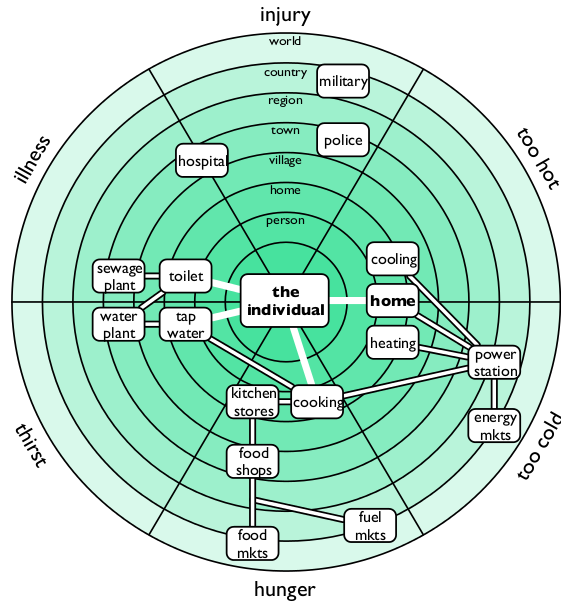Bright green, blight green, and lean green futures

Last month, Vinay Gupta wrote a series of three blog posts Can the World Computer Save the World? The trilogy is an attempt to reconcile the world of crypto and the climate emergency.
I’ve always found Vinay a compelling speaker, and I found a podcast episode embedded into the first post of the trilogy especially illuminating. Around 49 minutes in, he talks about three different approaches to ‘green futures’ which I haven’t seen documented elsewhere. So I’m doing so here, mainly for my own reference.
Bright green
A “useful lie” according to Vinay, who says that to suggest we’re going to zero huge, zero-footprint skyscrapers covered in solar panels and vertical gardens just isn’t scalable. You’d have to be making $250k/year to live in one but hey, at least you’re no longer part of the problem.
Effectively, bright green is “luxury branding for a sustainable” world which might end up paying for technologies which can then “cascade down”. It’s the “iPhone model of a green future”.
Blight green
This is “next door” to bright green, and is “blight as in leaf blight”. This is using technologies to solve the environmental crises which risk creating much worse crises by doing so: nuclear power and heavy biotech (e.g. salt-resistant wheat), genetically-engineering animals.
This area is “filled with hail-mary passes” like geo-engineering, but desperate people do desperate things. Our success rate for interfering with complex systems is “approximately zero” so things will inevitably go wrong and we’re going to be “totally screwed”.
Lean green
This is Vinay’s preferred option, and the only one he thinks is scalable and realistic. It’s “numerical” by which he means quantitative, not qualitative. You simply imagine that every human being has equal right to the planet’s “material bounty”, and then divide up what’s available, and how much they can emit.
This may vary from area to area, but, for example, Vinay has calculated the amount of copper would be about 5kg per human per lifetime. That’s not a lot, and would include the copper in cables providing power to people’s houses, for example.
This approach, he says, involves thinking differently. Instead of single-use plastics, we could have stainless steel which can be reused until it’s melted down and recycled.
So bright green for the few, and lean green for the many. As new techologies begin to scale up, prices come down and “more elements of the bright green lifestyle become infused into the lean green lifestyle.
Remember, Vinay says, half of the human population does not provide any barriers to sustainability at all as they grow their own food and have tiny carbon footprints. We in the west are the ones “in a fascist relationship with the future,” not them.


